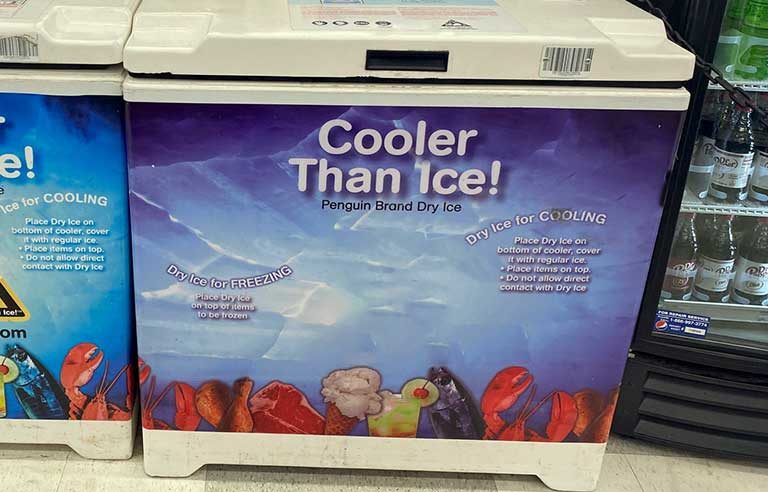Not your ordinary ice

Photo: Jennifer Yario
If you’ve ever ordered or received a gift of meat, ice cream or other perishable food from an online company, it may have been shipped with dry ice.
“Dry ice is frozen carbon dioxide,” the National Weather Service says. “Unlike most solids, it does not melt into a liquid, but instead changes directly into a gas.”
Dry ice is very different from regular ice – its temperature is around -109° F, and it needs to be handled carefully to prevent injuries. The NWS says to:
- Never put dry ice in your mouth or swallow it! If you do, get medical help immediately.
- Don’t touch dry ice with your bare skin – it can cause severe frostbite. Use tongs, thick gloves or an oven mitt.
- Never place dry ice in an unventilated room or car – the carbon dioxide can build up and cause unconsciousness and even death.
- Never place dry ice in an airtight container. As it turns from a solid into a gas, the gas can build up until the container bursts. Use a foam cooler with a loose-fitting lid.
- Don’t store dry ice in your freezer – it could cause the freezer to become too cold and the motor to shut off. When your dry ice is no longer needed, place it in a well-ventilated container and take it outside where kids and pets can’t reach it. It’ll turn into gas and disappear.
Post a comment to this article
Safety+Health welcomes comments that promote respectful dialogue. Please stay on topic. Comments that contain personal attacks, profanity or abusive language – or those aggressively promoting products or services – will be removed. We reserve the right to determine which comments violate our comment policy. (Anonymous comments are welcome; merely skip the “name” field in the comment box. An email address is required but will not be included with your comment.)
